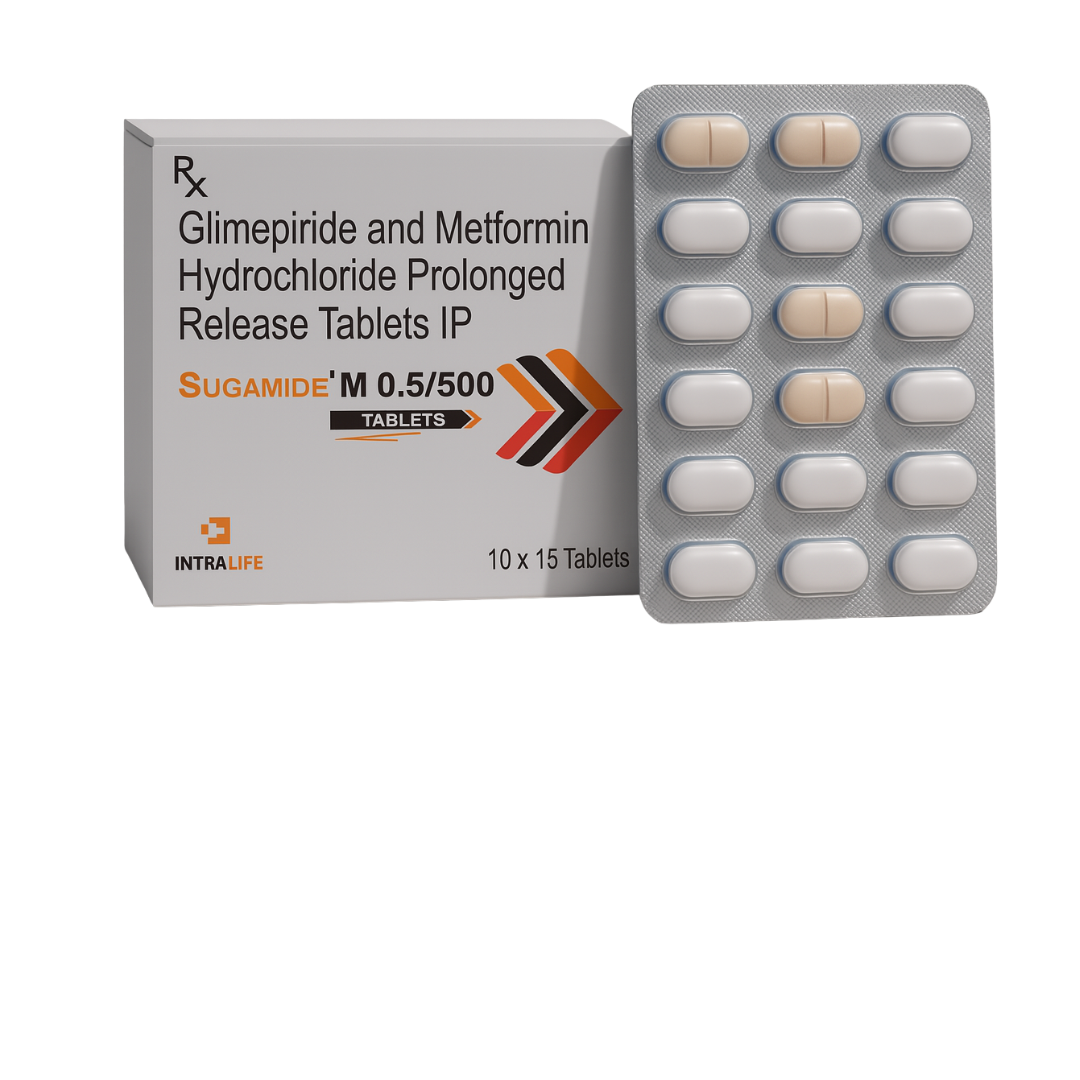
SUGAMIDE-M 0.5/500 TABS
MRP: 870
Packaging: 10×15
Pack Type: tablet
Composition:
Glimepiride 0.5mg + Metformin 500mg SR (nano-Bi Layer Tablet) with breakline
Indication:
Used for the treatment of type 2 diabetes mellitus in adults to improve blood sugar control when diet, exercise, and single drug therapy are not sufficient. Combines Glimepiride (stimulates insulin release) with Metformin SR (improves insulin sensitivity) in a nano-bi layer tablet for sustained and effective glycemic control.
Description:
Glimepiride 0.5mg + Metformin 500mg SR Nano-Bi Layer Tablet is an advanced oral antidiabetic medication designed for effective blood sugar control in Type 2 Diabetes Mellitus. This bi-layer tablet features a unique Nano-Bi Layer formulation ensuring the fast release of Glimepiride and sustained release (SR) of Metformin, providing prolonged glucose-lowering effects throughout the day. The breakline allows for easier dose adjustment. Ideal for newly diagnosed patients or those requiring a low dose of Glimepiride alongside standard Metformin therapy.
Tags:
- Dual-action glucose control (fast + sustained)
- Nano-Bi Layer tech enhances bioavailability
- Reduces insulin resistance and improves insulin secretion
- Breakline for flexible dosing
Usage Information
Dosage
Take once daily or as directed by your physician Swallow whole or split along the breakline if advised Take with food to minimize gastric irritation Do not skip or double dose
Side Effects
Hypoglycemia (low blood sugar) Nausea or stomach discomfort Diarrhea (due to Metformin) Weight gain (minor, due to Glimepiride) Headache or dizziness (rare)
Contraindications
Type 1 Diabetes Mellitus Severe renal or liver impairment History of lactic acidosis Known allergy to Glimepiride or Metformin Pregnant or breastfeeding women (unless advised by doctor) Alcoholism (may increase risk of lactic acidosis)
